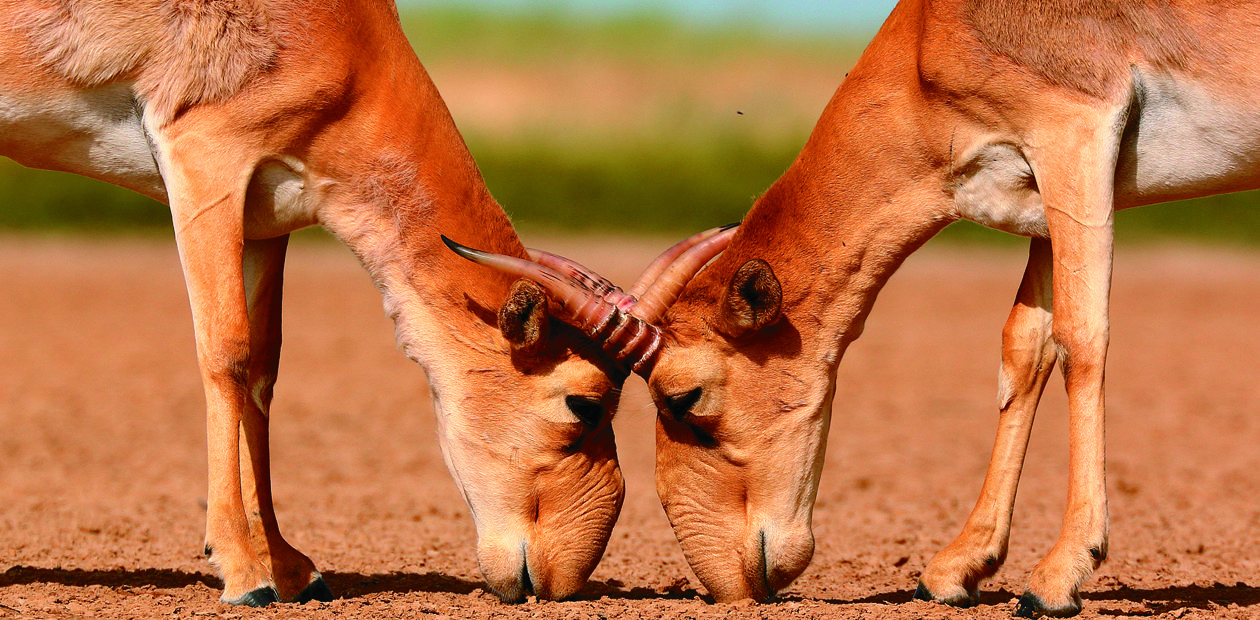Why Do Steppes Need Artesians?
What is an artesian? This is a small bitter–salty lake formed by overflow of an abandoned artesian well. Such lakes are spread over withered lands of virgin steppes. Four-legged and winged representatives of the unique steppe fauna, many of them under threat of extinction, find water, food, and shelter in these modern steppe oases. Monitoring of this stunning piece of wildlife in the Stepnoi State Nature Reserve (Astrakhan oblast) allowed Karina Karenina and Andrei Gilev, young St. Petersburg ethologists, to deliver a paper illustrated by brilliant photos of the authors. The paper will be published in the new issue of our journal
The steppe lands seem as measureless and eternal as a sea; however, these ecosystems are most vulnerable to human impact. Once tremendous, the virgin steppes of Eurasia have so far reduced to separate undamaged areas, being the last frontier for many species of steppe animals and birds, some of which are enlisted as endangered.
Water is among the major problems for the steppe fauna. Most of the aquatic bodies are used for economic purposes, making them inaccessible for steppe inhabitants. On the other hand, the man involuntary created oases in the steppe, which appear around abandoned artesian wells. Although the quite mineralized water of the artesian lakes can hardly be regarded as true freshwater, it is still drinkable, while both the slightly saline water and dense shore vegetation abound with invertebrates.
These “manmade” steppe lakes are teeming with life. Here, a ruddy shelduck couple guides their brood to water, loudly crying, flapping their wings, and driving away other adult birds. This excessive parental aggression sometimes allows a couple to stay alone in a lake with several broods comprising up to 35 juveniles. However, the couple that “won” the lake for themselves attends all of them as their own babies.
The steppe antelopes, saigas, which survived to the present day since the epoch of mammoths, are attracted to the artesian lakes not only by water but also by the salted soil on their banks, acting as a “beast solonetz”, and the near-shore clay. The steppe plants rich for alkaloids are the major part of the saiga diet, and clay acts, thanks to its adsorbing properties, as the popular Smecta, a clay-like powder that enhances the elimination of toxins from the body and normalizes the intestinal flora.
The solonetz sites, open plain areas on the banks of artesian lakes, are the place where saiga individuals from different herds and harems can meet, thereby contributing to the maintenance of genetic diversity. Stags there fight for females; newborn babies get acquainted with the “society”; and elder females, frequently heading the herd during migrations, “measure” their social status and acquire experience in social interactions, beneficial for future.







